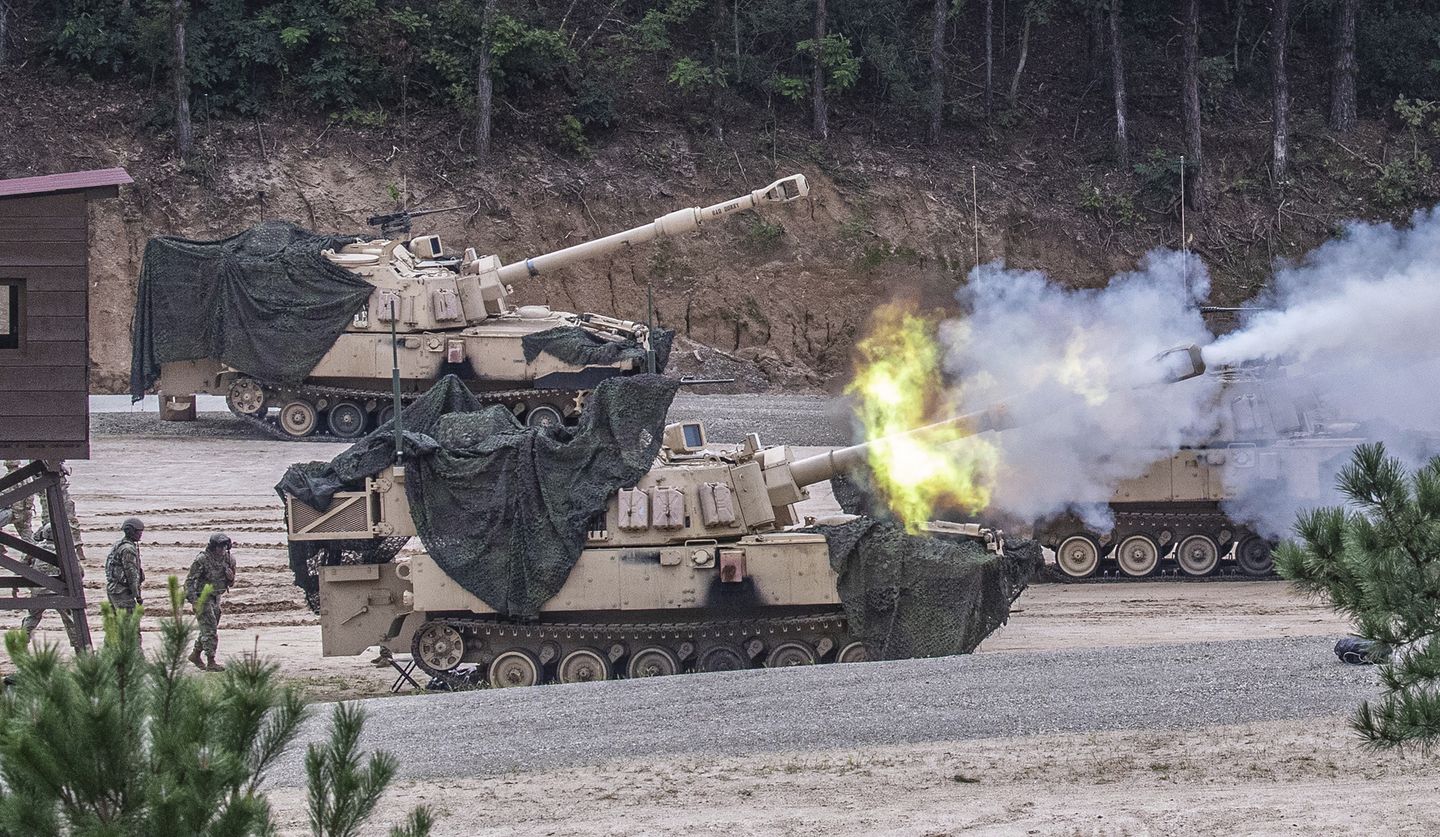

U.S. and South Korean military forces on Thursday concluded their most substantial “live-fire” joint exercises in years — major drills featuring howitzer rounds slammed into a mountainside, swooping A-10 attack aircraft and Apache helicopters that Washington and Seoul had scaled back over the past half-decade for a range of reasons.
The scope of the joint exercises had been reduced during President Trump’s 2018-2019 diplomatic outreach to North Korea. The liberal administration of former South Korean Moon Jae-in had also sought to appease Pyongyang by curtailing the drills, which were further hindered in recent years by COVID-19 restrictions.
The exercises that wrapped up Thursday involved more than a dozen field training events in line with current and conservative South Korean President Yoon Suk-yeol’s commitment to “normalizing” the drills back to pre-2018 levels, according to the Yonhap News Agency in Seoul.
The regime of North Korean leader Kim Jong Un slammed the drills, claiming the U.S. and South Korea engaged in rehearsal for invading the North. The regime has a history of responding by test launching missiles, and there was uncertainty Thursday over whether such launches may be imminent.
The U.S.-South Korea drills included live fire from American and South Korean howitzers, tanks, machine guns, and mortars, with American A-10 attack aircraft and Apache helicopters also participating, according to a report by Reuters, which was among a handful of media granted rare access to the drills.
Rounds from howitzers pounded into a mountainside less than 20 miles from the fortified border with North Korea on Wednesday as tanks maneuvered and fired their guns at targets. Reuters cited U.S. Col. Brandon Anderson as saying the drills were not aimed at any specific adversary, but obviously took into account the “reason” for the U.S.-South Korea alliance — alluding to North Korea.
The U.S. has roughly 30,000 military personnel stationed in South Korea, and has been the country’s main defensive ally since the early-1950s Korean War ended in a stalemate. Col. Anderson said the U.S. forces intend to be there “for the long haul” and that “as long as there is a threat out there, it gives us purpose, and purpose to train.”
Pentagon Press Secretary Brig. Gen. Pat Ryder told reporters in Washington on Wednesday that the exercises “remain important, in terms of ensuring that our militaries can closely work together and be prepared to fight and defend [South Korea] and our partners and allies in the region.”
Tensions between the U.S. and North Korea have swirled since the historic 2019 Trump-Kim summit in Hanoi, Vietnam, where the two sides failed to agree to a far-reaching deal to end the Kim regime’s nuclear and missile programs that have been built up over decades in defiance of repeated U.N. Security Council resolutions.
Mr. Trump said at the time that he had to walk away from the summit because Mr. Kim was demanding sweeping sanctions relief for only a limited commitment to destroy part of his arsenal.
More recent years have seen North Korea carry out waves of ballistic missile tests, while continuing to advance its nuclear weapons program. U.S. intelligence has recently cited evidence that the Kim regime is preparing to conduct its first nuclear detonation test since 2017.
The Biden administration has increased military coordination with South Korea since Mr. Yoon called upon his inauguration in May for stronger alignment between Seoul and Washington in response to the escalating North Korean nuclear and missile threats, and China’s expanding pressure tactics against smaller countries in Asia.
